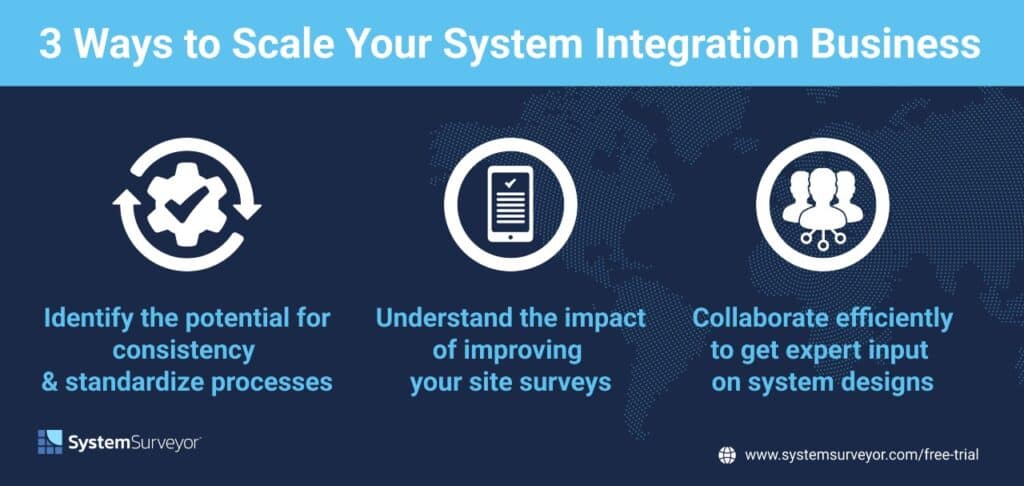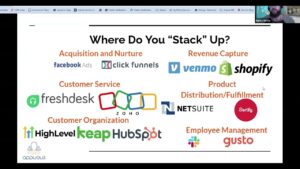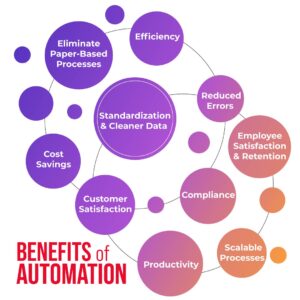Maximize Growth Efficiency Through System Integration
System integration connects your tools and processes, allowing your business to scale smoothly while improving efficiency and productivity.
Introduction:
Running a growing business often comes with a host of challenges, from managing data across different platforms to ensuring your team remains productive. This is where system integration becomes a vital tool for streamlining operations. If your various platforms, apps, and tools don’t speak to one another, you’ll likely encounter data silos and inefficiencies that slow down growth. Let’s dive into how system integration can be a game-changer for scaling your business.
What Is System Integration and Why It Matters for Growth
System integration is the process of connecting different software applications, tools, or systems to work as a unified whole. When done effectively, it automates data flow, reduces redundant tasks, and enhances collaboration across your team.
Key Benefits of System Integration:
- Operational Efficiency: Eliminates manual data entry and connects all your tools for seamless communication.
- Cost Savings: Automation through integration reduces overhead costs by minimizing human errors and cutting down time spent on repetitive tasks.
- Data Centralization: Ensures that information is up-to-date and accessible across departments, removing the need for multiple data points.
How System Integration Supports Business Scaling
Scaling a business requires a seamless flow of information between departments, whether it’s sales, marketing, or customer support. System integration facilitates this by allowing your CRM, marketing automation tools, and project management systems to operate together without bottlenecks.
Practical Ways to Leverage System Integration for Growth:
- Connect Your CRM and Marketing Tools
Integrating your CRM with marketing platforms ensures that leads are nurtured automatically based on real-time data, allowing your sales and marketing teams to focus on higher-priority tasks. - Automate Workflow Across Teams
Use integration to link task management systems, such as Asana or Monday.com, with communication platforms like Slack or Microsoft Teams to keep project updates flowing without constant manual updates. - Link Inventory Management and Order Fulfillment
For ecommerce businesses, integrating inventory management systems like Katana with fulfillment solutions ensures real-time tracking of stock levels and order processing.
Examples of Successful System Integration in Action
Integration Between CRM and Email Marketing
Let’s say your business uses Drip for email marketing and Pipedrive for managing sales pipelines. Integrating these platforms allows your sales and marketing teams to see real-time data about customer interactions, making it easier to send timely follow-up emails and close deals faster.
Ecommerce Integration
Using Spocket for dropshipping and connecting it with Shopify through integration ensures that product listings, inventory, and shipping are updated in real-time without manual intervention, improving customer satisfaction and reducing administrative workload.
Common Challenges in System Integration
Although system integration offers many benefits, it can also present certain challenges:
- Data Incompatibility: Some systems may not easily sync due to differing formats or outdated software.
- Initial Cost: While integration can lead to long-term savings, initial setup costs may be a consideration.
- Security Risks: Ensure that the integration doesn’t open up vulnerabilities that could expose your data to breaches.
Solutions for Common System Integration Issues
Here’s how you can address some common integration obstacles:
- API Integration: Use open APIs to connect incompatible systems.
- Regular Security Audits: Mitigate risks by scheduling frequent security assessments and using trusted integration tools.
- Consult Experts: Partner with vendors that offer integration support to help streamline complex setups.
FAQs
What is system integration in business?
System integration refers to connecting various tools and applications your business uses so they can work together seamlessly, automating processes and centralizing data.
How does system integration improve efficiency?
It reduces manual work, centralizes data, and allows for real-time communication between tools and departments, ensuring smoother operations and quicker decision-making.
What are common tools for system integration?
Popular tools include Zapier for workflow automation, Vendasta for digital client management, and Katana Cloud Inventory for inventory integration.
What challenges can I expect with system integration?
Common issues include data incompatibility, initial setup costs, and potential security vulnerabilities. These can be mitigated through careful planning and regular security checks.
Can small businesses benefit from system integration?
Absolutely! Integrating your CRM, email marketing, and task management tools can help small businesses save time, reduce human error, and grow efficiently.
Top Tools to Simplify and Scale Your Business
- Drip – A powerful email marketing automation tool designed to sync with your CRM, helping you nurture leads and automate campaigns.
- Spocket – Integrates with Shopify to streamline dropshipping and product sourcing for ecommerce businesses.
- Vendasta – A comprehensive digital client management platform that connects with other tools to automate client communication and reporting.
- Katana Cloud Inventory – Cloud-based inventory management software that integrates with ecommerce platforms to optimize order fulfillment.
- BugHerd – A visual bug-tracking tool that integrates with project management platforms, helping development teams streamline feedback collection.
Keywords: system integration, business scaling, automation, CRM integration, task management, ecommerce fulfillment, workflow automation, API integration, inventory management







